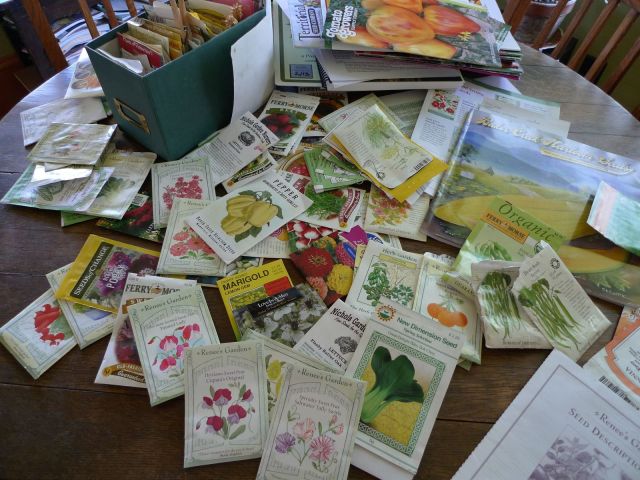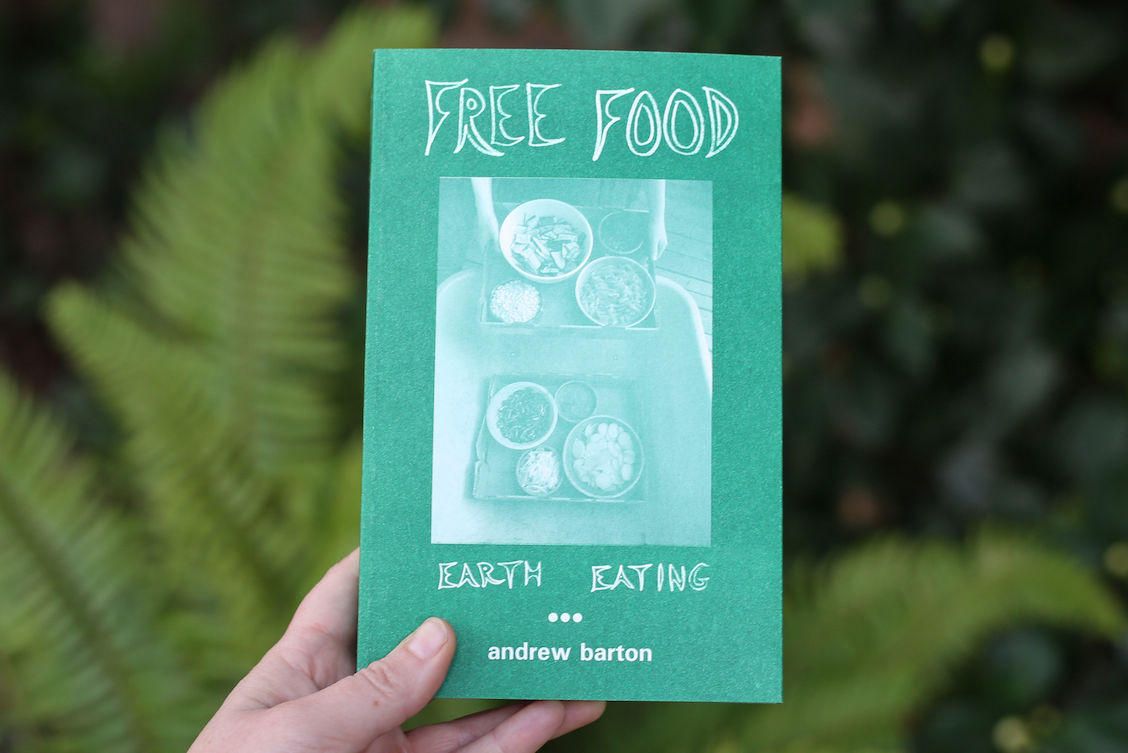Start Your Own Seeds

Image: Kate Bryant
It's time to start your vegetables! Let this be the year you try it... it's simple, fun and doesn't have to be expensive if you stay on mission and only buy seeds for what you know you can grow in your garden this year.
This is an adaptation of a blogpost I wrote last spring. If you need more detail, drill down a bit with this blogpost and then, if you still need more detail, follow up with this longer article I wrote back in 2009 for Portland Spaces on starting vegetables from seed.
If you’ve never started vegetables from seed before, start small, with just a couple of seed varieties. Some of the easiest to start now are lettuce (can be planted outdoors, in the cool spring weather, as soon as it's about an inch tall), as well as the tender tropical vegetables like tomatoes and peppers (wait til late May-early June to plant out). In late April or early May, you can sow fast-growing squash, cucumbers, and melons indoors, for planting out in late May/early June. But to begin: Vegetables Round One: tender tropicals that need the biggest head-start (tomatoes, peppers and eggplant) and cool-season lettuces, mustard and mesclun green mixes.
Materials:
- Planting containers. Almost anything that holds potting soil can be used. To recycle nursery pots (2- to 4-inch size best) or flats, run them through the dishwasher or scrub them clean and dry them. You can also use purchased peat pots, yogurt cups or tin cans with holes punched in the bottom, or anything you can dig up that is non-toxic and holds at least 3/4 cup of soil.
- Drip dishes or trays for underneath pots. If you re-use old drip dishes or trays, wash them. Some recommend using bleach but I stopped doing that a few years ago and haven’t had problems yet. A dishwasher makes it easy.
- Potting medium. Avoid disease/insect issues and purchase seedling mix for seeding plants indoors.
- Seeds. If you’re using older packets, make sure to check that the seeds are still viable. Most seeds have a date and will say how long the seeds are viable if stored properly. If not, you can google it. Best to start indoors are leafy greens, onions, cole crops, and fruiting plants like tomatoes. (Root crops should be sown directly outdoors.)
- Labels. Re-use plastic nursery tags that have one blank side, buy new plastic tags or use popsicle sticks.
- Pencil. Pencil is most durable on plastic tags, as counter-intuitive as it seems.
- Lights. This is very valuable but not completely essential. If you have a very bright spot in a bright room, right next to a window, your seeds could get enough light… especially if we have unusually bright March and April. But a grow-light’s more reliable! I use shop lights and actually, mine aren’t even full spectrum – just regular shop lights. Full spectrum is better but you can get away with regular shop lights for short-term seed starting projects (versus trying to bring orchids into flower and such).
- Heat mats or cables. These are easy to find at local nurseries but if you’re just starting a few plants, get creative. Those plants that do best with bottom heat (eggplants, peppers, even tomatoes) can be put in a warm spot such as the top of an inefficient, old-fashioned fridge or even close to a heating vent. (Try setting them on bubble wrap or another insulating material to modify hot-and-cold fluctuations.) Move the tray into a bright spot once seeds have germinated.
What seeds to start - and when?
In the Pacific Northwest, the best time to start the slower-growing, warm-season crops like tomatoes, eggplants and peppers indoors is mid-February to mid-March. But choose quick-growing, small-fruited types and you can start them through late March. Most beginning gardeners find their tomatoes sown in February are getting leggy in late April, and yet it isn’t warm enough to plant them outdoors. If you have lights, warmth and are willing to baby them along, start at the beginning of February. Once you’ve done it for a few years, you’ll have a system locked in and can adjust your lights and have a succession of seeds going. For beginners, start with easy, small-fruiting jalapeno peppers, cherry tomatoes, and Asian eggplants now and plan to set them out in late May/early June. (Mid-May if you have an exceptionally warm spot near a building or use floating row covers, Wall-O-Waters or Kozy Kotes or other forms of season-extending devices.) Now’s also a good time to start cool-season flowers like pot marigold (Calendula ), poppies and love-in-a-mist (Nigella), herbs like parsley, cilantro and chervil, and cool-season vegetables that can be set out in 3-4 weeks including lettuce, kale, mustard and bok choi. If you’re feeling ambitious, start perennial flower seeds now. Check seed packets for details.
Get planting:
Wet your soil mix in a large bowl or tub. (It’s harder to wet the peaty seed mixes when they’re already in the pot – you’ll have to keep adding more soil, and it’s a pain, take my word for it.) Once the soil is thoroughly damp, gently press the seed mix into the trays or pots, taking care not to compact it too much. If the mix is chunky, mist or gently water to settle it. Now, label your pots so you don’t forget what you’re planting where! With pots labeled, sow your seeds, following the directions on the seed packets. Cover with soil to the depth recommended on the seed packets. Water gently with a spray bottle to settle seeds. Most seeds don’t need any light until they germinate so check on them regularly until you see the first seeds sprout. At that point, switch the lights on or just place pots in a bright spot.
For a more in-depth coverage of seed-starting, with diagrams and illustrations, read this I wrote on starting seeds indoors.




